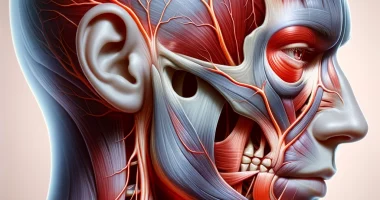Endometriosis
What is it?
Endometriosis is a pathology of the female reproductive system in which cells similar to the inner layer of the uterus (endometrium) appear outside the uterine cavity, where there is a benign overgrowth of tissue with morphological and functional properties similar to the endometrium. In other words, it means the ectopic location of the endometrium with a high risk of malignant transformation. Endometriosis is a fairly common pathology. Recently, the disease showed a clear tendency to rejuvenation. In terms of prevalence, it is surpassed only by infectious and inflammatory diseases of the reproductive organs.
Endometriosis is mainly treated by laparoscopic access, up to common forms – retrocervical endometriosis with bowel involvement and endometriosis of the bladder.
About the disease
A woman’s uterus is lined with glandular tissue called endometrium. With cervical endometriosis, the endometrium begins to actively grow outside the uterus, invading its muscular layer, ovaries, fallopian tubes, bladder, rectum, peritoneum, and sometimes other organs such as the kidneys or lungs. It is a benign process, but it causes serious discomfort and health problems and can also lead to infertility.
Cervical endometriosis is widespread (third most common after inflammatory diseases and uterine myoma) – mainly in women of reproductive age (25-40 years), but sometimes occurs in girls during puberty and in older women during menopause.
Foci can vary in shape and size – from rounded masses of only a few millimeters to shapeless growths up to several centimeters in diameter cherry-colored, separated from the surrounding tissues by whitish scars of connective tissue. These foci become especially visible on ultrasound before menstruation due to their cyclic maturation.
Classification
Endometrioid tissue can spread directly to the genitals. In this case, endometriosis is called genital endometriosis. Altered areas may be present in the following structures:
- in the thickness of the myometrium;
- in the ovaries;
- in the fallopian tubes;
- in the cervical canal;
- in the tissues of the vagina and labia.
Endometriosis of the uterine body (adenomyosis), i.e., penetration of the endometrium into the inner, basal layer of the organ, is the most common. The pathology is predominantly prevalent among women over 40 years of age, increasing the risk of malignant diseases of the reproductive system.
Extragenital endometriosis is seen when endometrial cells spread to the inner layer of the abdominal cavity, bowel tissue, bladder, and rectovaginal septum.
Diffuse and nodular forms of endometriosis are distinguished depending on the prevalence of endometrial cells in atypical areas. In the first case, the “irregular” epithelium is present in various pelvis regions at once and does not have clear boundaries. In the nodular form, endometrioid tissue is enclosed in a capsule.
If endometriosis penetrates the body of the uterus, the diagnosis is “adenomyosis.” It is the most common form of the disease. Pathology is classified into different degrees of severity depending on the extent of changes in the organ’s tissues and the depth of penetration of endometrioid cells.
Degrees of severity of uterine adenomyosis:
- changes are limited to the uterine mucosa;
- endometrioid tissue is detected in the uterine muscular layer;
- The lesion extends to the entire thickness of the myometrium up to the serous covering of the organ;
- The pathologic process involves the parietal peritoneum and nearby organs.
Ovarian endometriosis is the second most common form of the disease. It is also divided into degrees of severity depending on the number and size of the cysts formed and the involvement of surrounding tissues in the pathological process.
Symptoms of endometriosis
Endometriosis is a pathology, the clinical picture of which can vary significantly from case to case. The most common signs of endometriosis are:
- painful, heavy periods;
- discomfort during intercourse;
- Change of the pattern of menstruation (brown color, presence of clots);
- difficulty conceiving and a tendency to miscarriage;
- menstrual irregularities;
- abdominal spasms outside of your period.
During menopause, a woman may complain of nausea, lower abdominal spasms, uterine bleeding (significant and spotting), fatigue and unwellness.
Causes of endometriosis
Experts are still arguing about the causes of the disease. Most are inclined to the so-called retrograde menstruation. According to this theory, during menstruation, particles of the endometrium and blood flow into the abdominal cavity, attach to various organs and begin to develop there. At the same time, during menstruation, when the endometrium should be rejected from the uterus, microbleeding occurs on other organs involved in the process, leading to inflammation.
The following factors also affect the risk of developing cervical endometriosis in women:
- heredity;
- surgical interventions on the uterus, damaging its mucous membrane (curretage, vacuum, cauterization of erosion, long-wearing an intrauterine device, etc.);
- hormonal disorders (especially at menopause);
- immune system malfunction;
- early onset of menstruation;
- inflammatory and infectious diseases of the urogenital system;
- improperly selected contraceptives.
Diagnosis of endometriosis
Endometriosis is a pathology, the clinical picture of which can vary significantly from case to case. The most common symptoms that appear in women with ectopic location of endometrial cells in the pelvis are:
- painful, heavy periods;
- discomfort during intercourse;
- Change of the pattern of menstruation (brown color, presence of clots);
- difficulty conceiving and a tendency to miscarriage;
- menstrual irregularities;
- abdominal spasms outside of your period.
However, these symptoms can also occur in other gynecologic diseases. Gynecologic examination and colposcopy will help to differentiate the pathology. The examination can determine endometriosis of the cervix, vagina, ovaries, and adenomyosis, including its degree. Most often, the pathological epithelium is seen as dark dots on the pale mucosa (diffuse form) or palpable as a shapeless, sedentary thickening (nodular form).
For the final verification of the diagnosis, the gynecologist will appoint a woman for an additional examination. It is necessary to identify the degree of progression of the pathology, its exact location and prevalence, and the presence of concomitant diseases. Within the framework of complex diagnostics may be required:
- ultrasound scan;
- hysterosalpingography;
- hysteroscopy;
- computed tomography or magnetic resonance imaging (to detect extragenital endometriosis);
- laparoscopy;
- laboratory tests (determination of hormone levels, oncomarkers).
Endometriosis treatment
Treatment of endometriosis addresses the following issues:
- to reduce the intensity of the pain;
- to remove the foci of endometriosis;
- to prevent progression;
- cure infertility (as part of complex therapy);
- prevention of recurrence of the disease.
Drug treatment is prescribed to women with small foci of endometriosis. Drug therapy is effective only in the early stages of pathology development. Usually, hormonal treatment is carried out, lasting from 3 to 6 months, and sometimes longer.
Indications for surgery are extensive endometriosis as well as large focal masses. Surgeons primarily choose minimally invasive laparoscopic gynecological surgeries for treatment. Such interventions minimize the hospital stay and rehabilitation period for a woman. Laparoscopic surgeries are performed using optical equipment that allows the surgeon to identify and remove all altered tissues accurately. To avoid bleeding and recurrence of the disease coagulation (cauterization) of the excision site finishes the procedure. Radio wave equipment is often used for the cauterization of foci on the cervix. In severe cases of endometriosis, when minimally invasive interventions are technically tricky, laparotomy is used.
All these treatment options are available in more than 700 hospitals worldwide (https://doctor.global/results/diseases/endometriosis). For example, endometriosis surgery is performed in 25 clinics across Turkey for an approximate price of $3.8 K (https://doctor.global/results/asia/turkey/all-cities/all-specializations/procedures/endometriosis-surgery).
Prevention of endometriosis
There is no specific prevention of endometriosis in women. The main thing is to be examined by a gynecologist regularly (at least twice a year), and if you have any complaints, immediately consult a doctor. If you had to undergo any surgical intervention affecting the uterus, then you need to monitor your health even more carefully because the risk of endometriosis, in this case, increases. It is also necessary to promptly treat all inflammatory and infectious diseases of the genitourinary system.
Rehabilitation after treatment
The duration of rehabilitation depends on the disease’s form, the chosen treatment method, and the woman’s health in general. General recommendations during the recovery period include:
- Limiting physical activity, including sports;
- no heavy lifting;
- limiting intimate contact;
- prohibition of swimming in open and public water bodies, overheating;
- prohibition of the use of vaginal tampons, suppositories, caps, and cups, except for medications prescribed by a doctor.
It is also necessary to carefully follow the doctor’s recommendations for taking medications and attend physical therapy if required.



